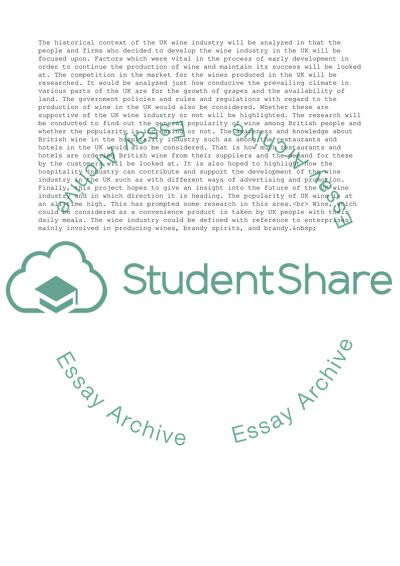Cite this document
(The Future of the English Wine Industry Assignment, n.d.)
The Future of the English Wine Industry Assignment. Retrieved from https://studentshare.org/business/1563754-research-project
The Future of the English Wine Industry Assignment. Retrieved from https://studentshare.org/business/1563754-research-project
(The Future of the English Wine Industry Assignment)
The Future of the English Wine Industry Assignment. https://studentshare.org/business/1563754-research-project.
The Future of the English Wine Industry Assignment. https://studentshare.org/business/1563754-research-project.
“The Future of the English Wine Industry Assignment”, n.d. https://studentshare.org/business/1563754-research-project.


